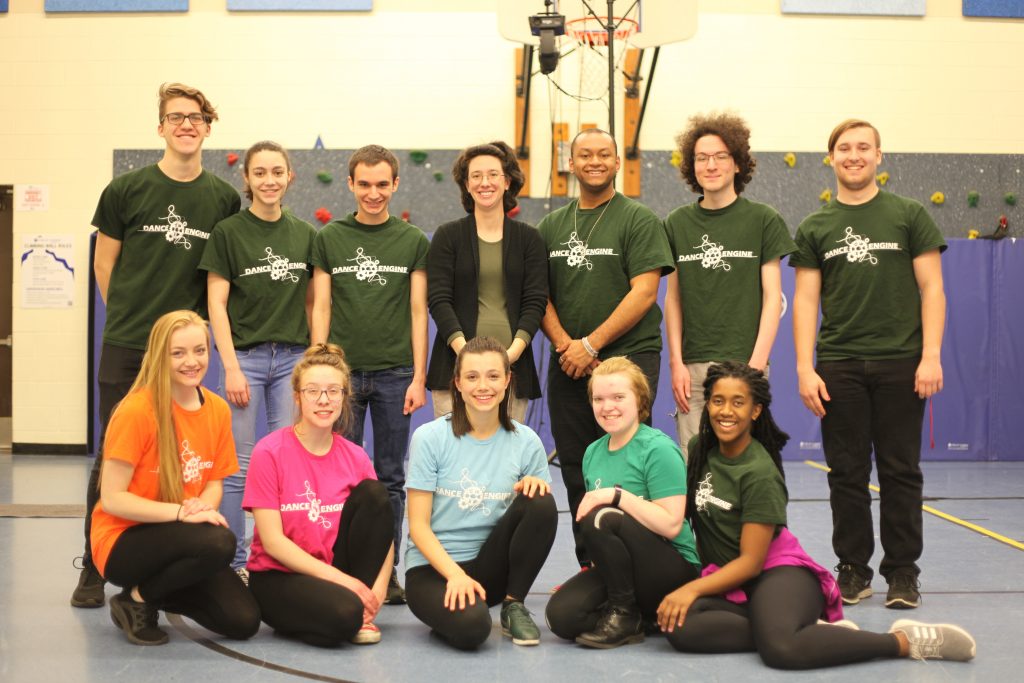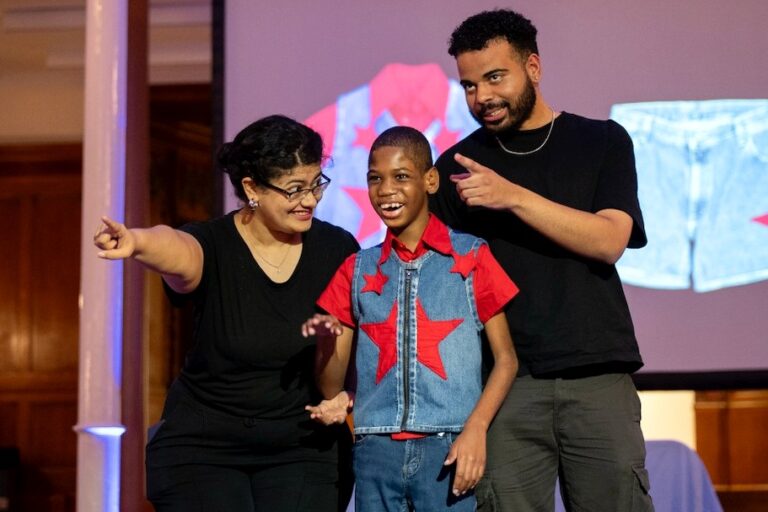
Junior Theatre major Jonas Higbee has been researching interactive musicals with Associate Professor Alison Dobbins since his freshman year at Michigan State University. Their research is based around Dance Engine, an ever-evolving artistic project that combines dancing, storytelling, improvisation, and audience interaction to build a single-story timeline.
For Dance Engine, all audience members are given tablet computers or, in the most recent version of the project, are told to access a web-based app created by a team led by Associate Professor Charles Owen from MSU’s Department of Computer Science and Engineering. The app allows audience members to influence the performance and encourages them to get up and dance. For example, in the “Lights On/Off” section of Dance Engine, random audience members are given control of spotlights that they can turn on or off at will, dancers then respond to the lights by freezing when the light hits them and dancing when the light isn’t on them.

Jonas Higbee in the top row, one from the right)
“Alison specializes in projection design, an aspect of theatre that most MSU theatre majors don’t touch,” said Higbee, an Honors College student. “It’s been great building a mentee-mentor relationship with her and learning from her many different skills.”
Dance Engine has been performed for students at Lansing public schools, the Dance and the Child International Conference in Australia, at Georgia State University this past April, and at the 2017 ArtPrize in Grand Rapids.
Higbee and Dobbins are using the principals of technology, improvisation, and audience interaction learned through their work with Dance Engine in another production, Shark! An Interactive Musical, that is part of their ongoing research project.
The biggest thing I have learned is the importance of flexibility. You’ve got to try things, see what works and what doesn’t, revise based on that, bring in new ideas, try more things, see what works, repeat.
Jonas Higbee, Theatre Major
In this unique production, audience members can dictate the outcome of the play by participating in a variety of mini-games that are integrated into the story via tablet or web-based app. The audience can interact by deciding which characters are spared from the shark, how they respond to the shark threats, and whether or not the shark is defeated.
“The biggest thing I have learned is the importance of flexibility. You’ve got to try things, see what works and what doesn’t, revise based on that, bring in new ideas, try more things, see what works, repeat,” Higbee said. “Sections of Dance Engine have been completely changed or added or removed since I started in Fall 2016. Shark! is something I would have never expected when I started, and the Shark! we’re doing this year will be quite different from the one performed last year.”

Higbee has run the sound system during performances, worked on stage management, been a substitute dancer for dancers unable to perform, wrote the script for the Spring 2018 performance of Shark! The Musical, and revised and conceptualized sections of Dance Engine.
“Jonas has been an essential part of my research work over the past two years,” Dobbins said. “His knowledge of theatre, experience as an actor, and research abilities have allowed us to explore new and exciting aspects in my interactive performance project. It is not an exaggeration to say that, without Jonas’ assistance on this project, Shark! the Musical would be dead in the water.”
Written by Annie Dubois


